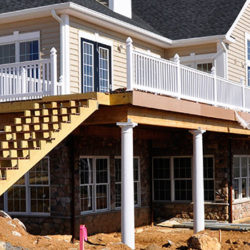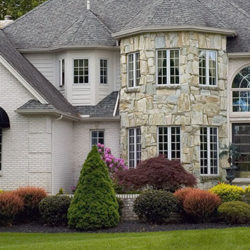You can transform your home in a variety of ways through additions. You can use an extension to extend an existing kitchen to make place for an island, construct an extra living room, or even add a new floor to the house to accommodate changing needs.
You can even build an extra story or a sunroom to enjoy the weather and your backyard view from the inside.
To inspire your home additions journey, here are ideas given by home addition companies you can use to your advantage:
Connect old and new.
You can seamlessly connect your home’shome’s old and new sections. When making the new addition, maintain the architectural coherence between the existing and new structures. The design, materials, and finishes should all complement one another to create a unified look.
You also should choose exterior finishes that match or nearly resemble the existing structure, such as siding, roofing materials, and paint colors. This will help visually blend the house’s old and new sections.
It’sIt’s vital that you consider the traffic and flow patterns in your home. Ensure that the new addition integrates seamlessly with the old plan, providing a natural transition and minimizing disturbance to general circulation.
Try and integrate pieces from the old space into the new expansion to maintain interior design continuity. Remember that consistent flooring, trim, paint colors, and consistent architectural features can help unify the overall design.
Expand the kitchen
Expanding your kitchen as a home addition can be a terrific way to create extra room and improve your house’shouse’s functionality.
Before you build the addition, you must determine why you require additional kitchen space. Consider considerations such as extra countertop space, storage, seating areas, and the ability to accommodate new appliances. This evaluation will assist you in prioritizing your requirements and guiding the design process.
You should work with an architect or a kitchen designer to develop a layout that meets your demands while blending in with your existing home.
Consider the traffic flow, appliance placement, storage possibilities, and overall appearance. The kitchen layout should enhance efficiency while also creating a seamless connection with the rest of your home.
To maintain consistency, choose materials, finishes, and fixtures that match the existing kitchen or your home’shome’s overall aesthetic. All important considerations include cabinetry, worktops, flooring, backsplash, and lighting. Aim for a unified design that seamlessly blends old and new features.
Use a competent contractor or a team of pros for the best outcome. Maintain open lines of communication and make regular site visits to track progress and resolve any possible complaints or adjustments.
Create a master bedroom.
If your master bedroom isn’tisn’t living up to its name, a home addition might be a great way to increase its size. Begin with examining the structural needs of the bedroom extension.
You should ascertain that the existing foundation, walls, and roof can support the additional addition. If necessary, hire a structural engineer to check load-bearing capacity and provide recommendations on any necessary adjustments.
You should incorporate windows, skylights, or glass doors to increase natural light in the larger primary bedroom. This will not only improve the visual appeal but will also produce a bright and pleasant environment.
To install an ensuite bathroom, ensure it is well-designed and integrated into the bedroom space. Choose fixtures that complement the overall design aesthetic and optimize the layout for efficiency and seclusion.
You should always use the services of professionals with house addition experience, such as architects, contractors, and interior designers. They can assist you in navigating the design and construction processes, providing significant experience and assuring a successful expansion.
Use zoning rules
When constructing a house addition, it is critical to work with zoning restrictions to guarantee compliance with local regulations and requirements. The rules also give you construction ideas to use to your advantage.
You should begin by learning about your property’s zoning restrictions and codes. To understand the laws and limits that apply to home extensions in your area, obtain a copy of the local zoning ordinance or check with the relevant municipal authorities.
You should then determine your property’sproperty’s setback regulations, which govern how close the addition can be to the property’sproperty’s limits. Check the maximum lot coverage allowed, which indicates the percentage of your land that buildings or structures can cover.
Determine whether your property is subject to any height limits. This will assist you in planning the height of your house addition to ensure compliance.
Also, check to see if your land is zoned for residential use and if any special designations or overlays may impose extra limitations or requirements for home extensions.
You may be required to attend zoning hearings or meetings if your home addition requires a zoning variance or special exemption. You should present your case and offer the material needed to show why the proposed variance or exemption should be granted.
After obtaining the appropriate permissions and approvals, ensure that the construction of your house addition follows the approved designs. Remember that any changes to the plans may necessitate new approvals or permits.
How wise is it to invest in a home addition?
If you currently don’tdon’t have enough space, or you would love to increase the value of your property, it’s wise to invest in a home addition.
Your needs should inform the addition that you settle on. Do you want more living space, a second bedroom, a larger kitchen, or a dedicated home office? Understanding your unique requirements will allow you to plan the addition more successfully.
Have a large enough budget to ensure that your project doesn’t doesn’t stall in the middle. To do this, you must consider building costs, permits, design fees, and other unforeseen charges. It is critical to be aware of your budgetary constraints from the start.
You should always engage skilled specialists specializing in house expansions, such as architects, home addition contractors DC, and subcontractors. Their skills and understanding will ensure that the project is completed efficiently and in accordance with the law.



